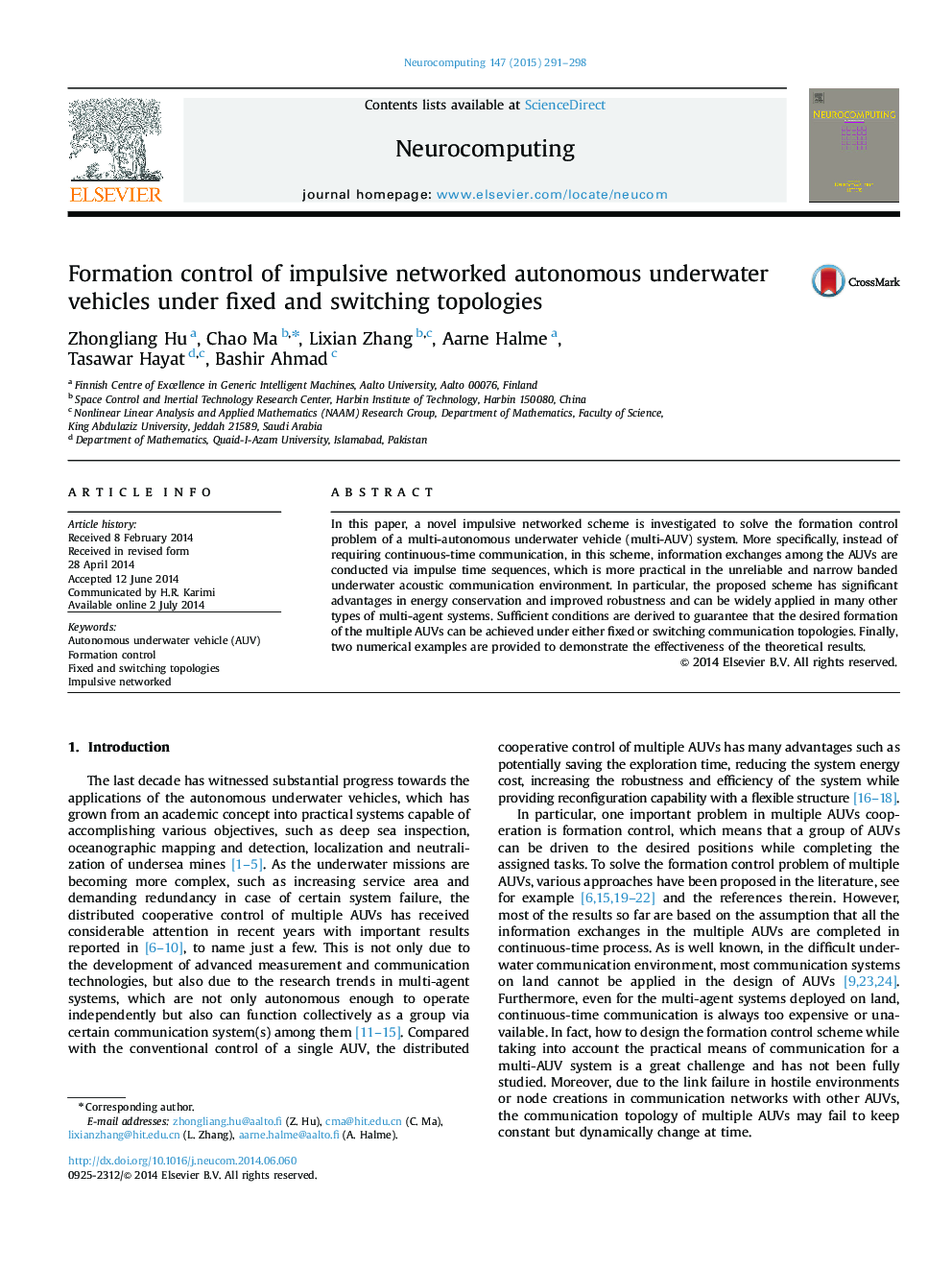| Article ID | Journal | Published Year | Pages | File Type |
|---|---|---|---|---|
| 409874 | Neurocomputing | 2015 | 8 Pages |
In this paper, a novel impulsive networked scheme is investigated to solve the formation control problem of a multi-autonomous underwater vehicle (multi-AUV) system. More specifically, instead of requiring continuous-time communication, in this scheme, information exchanges among the AUVs are conducted via impulse time sequences, which is more practical in the unreliable and narrow banded underwater acoustic communication environment. In particular, the proposed scheme has significant advantages in energy conservation and improved robustness and can be widely applied in many other types of multi-agent systems. Sufficient conditions are derived to guarantee that the desired formation of the multiple AUVs can be achieved under either fixed or switching communication topologies. Finally, two numerical examples are provided to demonstrate the effectiveness of the theoretical results.
